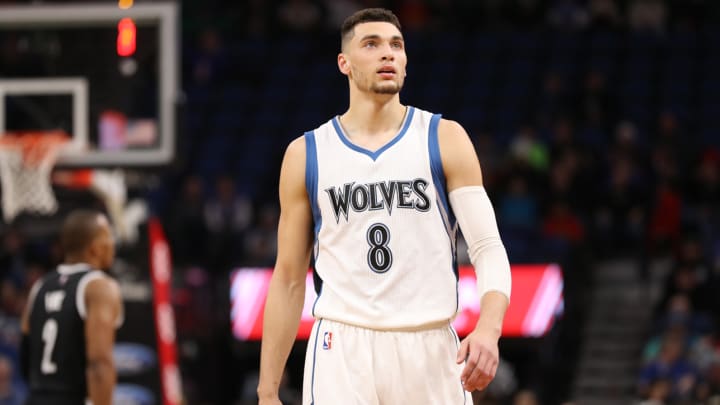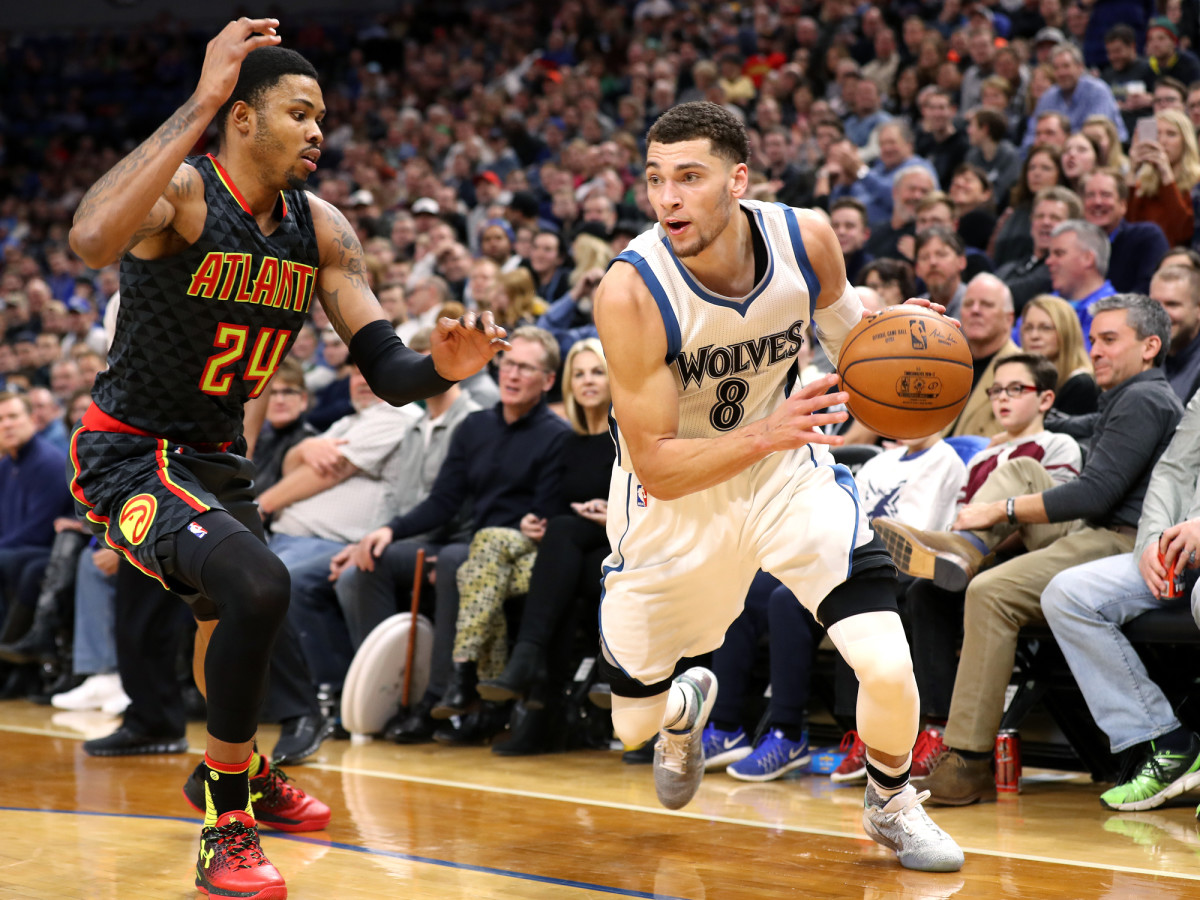Zach LaVine's Injury Puts His Potential On Pause

Zach LaVine was learning. You could see it plainly in his pick-and-rolls, each enriched by a more consistent progression of reads. The pull-up was always available to him. Yet more and more, LaVine turned the corner around those screens and entertained process for its own sake. He gauged, he digested, and he threw genuinely surprising passes amidst smooth drives and smoother jumpers.
In earlier days, LaVine’s basketball fight-or-flight impulses had been distilled into one: Shoot. Feel pressure from a defender? Rise over the top. Sense a double-team coming? Fire before it gets here. Find yourself being caged in against the sideline? Carve out room, go for the step-back. This was how one of the NBA’s greatest athletes and most effortless shooters came into the league streaky and, in a sense, unreliable. It didn’t seem as though LaVine’s game was especially selfish. More jumpy—the natural reaction of a young player who wasn’t yet seeing all his options.
Those alarm jumpers had faded from LaVine’s game this season. “Usually, in the last couple years, if I got caught somewhere, I always knew I'm able to get a shot off,” LaVine told SI.com in January. “It might not be the best shot.” The solution he found was a temporary reset. Whenever LaVine was in control of a possession going nowhere—any time a set stalled with the ball in his hands or a move didn’t go quite as intended—and see a different level of understanding. Often LaVine would pitch the ball to Karl-Anthony Towns or another big out on the perimeter, only to immediately follow the ball’s path into a dribble hand-off. “Like a two-man game,” LaVine said. “If you backdoor or if you go around a hand-off, it's a hard play to guard. Me and KAT—or Gorgui [Dieng]—we can both shoot. With me attacking, they have to make a decision.”
Does Cleveland Need Playmakers? The Truth Is In LeBron James's Turnovers
And with that, LaVine turned the emptiest portion of his shooting diet into an item of real sustenance. There are positive trends like this littered throughout LaVine’s offensive game—all of which make the news of his season-ending knee injury that much more unfortunate. LaVine has tore his ACL on Friday, the result of an awkward fall. But some of the pain with an injury like this one, structural and severe, comes by the way it thwarts progress. LaVine had made the steady climb to greater production and efficiency over his first two and a half years as a pro. Every significant step was a tribute to his understanding some different, nuanced element of the game.

“A big part of learning is trial and error,” Wolves coach Tom Thibodeau said. “I think he's worked at it and after going through the league a couple times, I think he has a much better understanding of the NBA game. It's starting to slow down for him.”
And now everything slows to a halt. LaVine can still learn while he’s away from the court, but so much of individual development comes from processing. Players see something on film, work to replicate it in their training, and then try to repeat that action so much that it digs below the outermost level of consciousness. “I feel like, with everything, it's muscle memory and focus,” LaVine said. You don't make a move by having it on your mind. You make it by having it fade into the background, which becomes significantly harder when a player can’t take the floor to rep it into second nature.
There’s also the reality that, when LaVine does return, his knee might make him a slightly different player. The hope is that any palpable effects would be temporary; LaVine is 21 years old, after all, and undergoing a process of surgery and rehabilitation that is by no means dire. But when a player jumps like LaVine does and glides around the floor so easily, it’s impossible to reflect on an incident like this without for a moment considering the advantages that could be lost. He’s still catching up to his athleticism in a lot of ways (most notably on defense). To lower that ceiling would be an unfortunate concession. The most tantalizing truths in LaVine’s game stem from the fact that, physically, he can do almost anything.
The Craft: Kent Bazemore's Brave New World
Yet all of that is a world away. A physical repair, all kinds of mental tests, and the deeply uncomfortable grind of joint rehab stand between LaVine and any practical basketball matters. There is some small organizational comfort to the Wolves, at least, in knowing that LaVine is a worker. “He's very, very disciplined, always in here before practice and after practice, during practice, then at night,” Thibodeau said. That schedule changes now, though the ethic that informs it should help streamline a months-long process.
LaVine, after all, has plans. He wants to be a part of Minnesota’s playoff breakthrough. He eyes a 50-40-90 season—benchmarks a notch better than his averages (45.9%/38.7%/83.6%) through 47 games this year. He takes seriously the idea of becoming a complete player, even though the full range of rhythms and complexities have thus far been beyond his grasp. Each of those goals feels a bit more distant now, though the work LaVine did to make them plausible cannot be ignored as his season meets an early end. Zach LaVine was learning. And once the daze of anesthesia fades into a new kind of life and routine, he’ll learn more still.
